The Monthly Scoop: November's Cashback Update
In today's economic climate, easing the cost of living crisis is a top priority for many. This is where cashback credit cards can shine, offering a direct way to get money back on your everyday spending. It's a simple, tangible reward that can help offset expenses without complex points conversions.
While the overall landscape for cashback offers remains steady, there are always competitive deals to be found, often tied to spending thresholds or specific categories. Comparing these offers ensures you're maximising your return.
Editor’s Pick-of-the-Bunch: Best Cashback Credit Cards for November
The NAB Low Rate Credit Card offers a generous $400 cashback when you spend $1,500 in the first 150 days. It also sweetens the deal with a 0% p.a. balance transfer for 12 months.
The ANZ Low Rate Credit Card provides $250 credit back when you make $1,500 worth of eligible purchases within the first 3 months from approval.
The Westpac Low Rate Credit Card is currently offering up to $350 cashback and also comes with a very competitive low purchase rate, making it a great option if you sometimes carry a balance.
The St.George Vertigo Credit Card stands out with up to $500 cashback specifically at selected supermarkets & petrol outlets, rewarding your essential spending.
⭐ Cashback Maximiser: Always check the eligibility criteria and spending thresholds for bonus cashback offers. Maximising your initial spend can often unlock a significant return!
T&Cs apply for all card offers so check our review and the PDS for details.
Cashback Credit Cards: The Need-to-know Basics
A cashback credit card offers cash as a reward for your spending. Unlike a rewards card, where you choose to collect and redeem points within a rewards program, a cashback card gives you money back for meeting certain criteria on your spending.
Cashback offers are rarely a bunch of $50 bills sent in the mail. Instead, it can look like:
-
- Credit on your card account: the offer might be a one-off credit back on your card, like $200 if you meet minimum spend requirements.
- A set amount: the card’s offer might be a flat amount, like $250. Most times, you’ll need to meet a minimum spend to unlock the cashback offer; for example, spending a certain amount on your card within a timeframe, like $3000 in 90 days.
- A gift card: you might receive a credit to spend at a certain retailer, like Kogan.com, Myer or Coles.
- Cashback on affiliate businesses: more cards are starting to offer perks with partner businesses, offering cashback when you use companies like Spotify.
- A percentage of your spend: some cards pay cashback as a percentage of your spending with a certain period, up to a capped amount. So, you might earn back 10% of your spending amount in 90 days, capped at $200. Some lenders also give ongoing cashback for spending at certain retailers, although usually at a lower rate like 1.5%.
- A travel credit. While not technically cashback, travel credits are like a complimentary annual gift card for flights with Qantas or Virgin Australia.
Always check the eligibility criteria of cashback offers to make sure you’re going to meet the requirements, or else you might miss out on the rewards.
The pros, cons and other options
Cashback offers are apples and oranges – every one is different, and the range of features, fees and other rewards you’ll get will vary from bare bones to a treasure trove.
Pros and Cons of Cashback Rewards Cards
Here's a breakdown of the advantages and disadvantages of cashback rewards cards:
Pros of cashback rewards cards
Flexibility. You can use cashback rewards to buy virtually anything, because it’s not locked into a rewards program.
Ease. Instead of converting points into flights or merchandise, you get real dollars to spend.
Features. Plenty of cashback cards are loaded with other perks like points, free travel insurances and airport lounge access
Cons of cashback rewards cards
Limited time. Some cards only offer cashback as a promotional deal for new applicants, so you’ll need to weigh up if the card fits your other needs as well.
Eligibility. You might need to spend a certain amount to get the cashback reward, which may not fit into your spending habits.
Annual fees. Sometimes, the best cashback rewards come from cards with the most features, and therefore higher annual fees.
You can also convert rewards points into cash, like gift cards. You can see the best rewards cards here.
Saving on an annual fee might be just as good as cashback. See the top no annual fee cards here.
How to compare cashback offers on credit cards
There are always a few details to compare to make sure you’re getting the best card for you and your spending.
You can use our comparison engine to shuffle and sort the cards according to features, like the annual fee, the purchase rate (the interest charged on your purchases) and the balance transfer rate.
Here’s what to compare:
- The annual fee. Annual fees can vary from basic cards with no yearly charge, through to premium cards that can cost hundreds of dollars each year. Annual fee offers can pop up too, like a discount on the first year, or an ongoing discount if you meet a minimum spend on your card each year. You can also look for credit cards with low or no annual fee if that’s important to you.
-
- The cashback amount. You’ll need to weigh up the cashback reward against the ongoing fees on the card. For instance, maybe the cashback offer helps offset a high annual fee the first year, but what about long-term? Check the conditions carefully, especially if it’s a percentage deal with a capped amount. If the maximum you can earn is $30 each month, the card may not work out in your favour. Of course, that also depends on what else you’re using the card for, and other features it has that make it worthwhile for you.
- Interest rates. Also called the purchase rate, the interest rate matters if you think you’ll carry a balance month-to-month. Paying interest on your spending can pretty quickly negate any cashback offer. Some cards offer low interest rates as a promotion, which then flicks back to the revert rate (the purchase rate). The revert rate can be higher than 20% on some cards. The more basic cards offer some great low interest rates with cashback offers thrown in too.
- Other features. Some cards come with lots of other advantages that can save you money. For instance, you might get free lounge access, mobile phone insurance or discounts with other businesses. Click the card name and read through the features to get a big picture of what it offers.
- Eligible purchases. Usually, only eligible purchases count towards your minimum spend requirements to get your cashback reward. Most everyday transactions would be eligible, but things like BPAY, cash advances (where you withdraw money from your card), balances brought over from another card, and government payments don’t count. Check the PDS of the card to find out what they consider eligible.
- Rewards points. Amazingly, some cards offer cashback on top of earning rewards for your spending. So, you might be able to reap even more by converting your points earned into gift cards. Rewards credit cards attached to a rewards program usually have higher annual fees, so make sure the card works out in your favour when everything is taken into account.
Just like rewards cards, you need to earn a certain amount of cash back to make the annual fee worthwhile. For instance, you might get the most out of a cashback credit card if you:
- plan to pay off your card each month
- spend enough normally per month to unlock your cashback offer, or earn the maximum cashback per dollar spent
- find the card has other helpful features, or a reasonable annual fee
How to calculate if a cashback credit card is a good choice for you
You can work out if a cashback credit card is going to work out in your favour by looking at your spending and running some quick numbers.
For example:
Let’s say a credit card offers 1% cashback on eligible purchases capped at $30 per month, and has an annual fee of $195.
The most you could earn on your spending is $360, assuming you spent at least $3000 per month on the card.
That would mean you earned $165 cashback in one year after the annual fee is deducted.
But, if you only spent $1500 per month, your total cashback would be $15 each month and $180 over the year.
With an annual fee of $195, your cashback doesn’t cover the annual fee.
Having said all that, other features of the card might come into play. For instance, the card might offer other discounts, a big rewards sign-up offer, or annual credit for flights or shopping with partner retailers.
So, in this instance, you’d have to decide if the extra features are worth the out-of-pocket expenses of the credit card.
What’s the difference between standard rewards and cashback rewards?
A cashback rewards program offers credit back on your account rather than points back on your spending.
Cashback is a much simpler type of reward than a rewards program that uses points, where you'll need to redeem points for items or services.
Are there limits on the amount of cashback you receive?
Limits – or caps – are often placed on cashback offers. For example, you might earn back 1% on your spending each month, capped at $30 per month or $200 per year. It’s always important to check the caps on cashback offers to make sure it’s going to give you the greatest value.
What can you do with your cashback?
For the most part, cashback credit cards allow cardholders to do what they want with their cashback when they receive it. Often, cashback is credited to the cardholder’s account, which means it could be used to:
- paying off some of your credit card balance
- covering the card’s annual fee
- buy any regular items in your day-to-day shopping
What fees come with a cashback card?
Just like most credit cards, cashback cards may have some fees attached:
- Annual fee. This is a yearly charge that you’ll pay each time you renew your card for another 12 months.
- Foreign transaction fees. If you purchase something overseas, even if it’s online, your credit card provider may charge a small percentage of the purchase price to cover the foreign currency exchange.
- Balance transfer fee. Rarely, you might need to pay a fee for bringing the debt from one credit card to a new one. Check the PDS to see if there’s any fees attached to a balance transfer, and what the interest rate is.
- Late payment fees. If you don’t make the minimum payments, you might be charged a late fee. The best way to avoid one is to set up a direct debit to pay off your card each month, or as much as you can.
Cashback Credit Cards vs Rewards Credit Cards
- Cashback as Rewards. With these cards, cashback is offered in place of a rewards program. So, instead of earning rewards points, these cards earn cashback.
- Cashback within Rewards. With this type of card, you earn rewards points on your card spending, which can then be redeemed for cashback rewards, usually in the form of gift cards.
- Cashback as a Feature. Some cards offer cashback on the side, where cashback is a selling point but not the main event. Essentially, these cards can offer extra value to cardholders who may not be looking for cashback as their number one feature.
- Cashback as an Intro Offer. Another way to enjoy cashback is through an intro offer. With these cards, you earn cashback on purchases made during the card’s introductory period.
- Pure Rewards Credit Cards. You'll earn rewards points within a certain program that you can redeem for gift cards, vouchers, flights and a whole more.
Why choose a cashback credit card?
Why should you opt for a cashback credit card over all other types of credit card? Let’s look at the various advantages a cashback credit card can offer.
Cashback cards can put money back in your pocket: If you’re using your card anyway, why not get something back? With a cashback credit card, you get money back on the spending you do day-to-day.
Cashback cards can provide a simple way to earn rewards: You don’t have to think about how many points you will earn on this purchase or that purchase, and you don’t need to worry about which reward will offer the most value. You get cash back on your purchases, as simple as that.
Cashback cards can make annual fees pay for themselves: Where cashback is offered as a feature, it can help cover the cost of your annual fee, allowing you to enjoy the other features on the card at low or no cost.
Cashback cards can boost a card’s value: When used as an introductory offer, cashback can provide a nice little boost in value as you get started with the card.
What about the downsides then? As with any other type of card, cashback credit cards can have disadvantages as well as advantages. Which means they don’t always work well for every cardholder.
Cashback cards can have higher annual fees: In order to earn cashback, you will usually pay out a higher annual fee than you would on say, a no frills credit card. It’s up to you to work out whether paying that annual fee is worth it in terms of the cashback your card earns.
Cashback cards can have higher interest: With a typically higher interest rate than more basic options, cashback cards would be a costly choice for cardholders who carry a balance. As any cashback earned would likely be cancelled out by the interest charged, this type of card only suits cardholders who pay their balance in full each month.
Cashback cards may limit cashback earned: Card providers typically limit the amount of cashback cardholders can earn each month. If you want to make your card work for you despite these limits, try to choose a card that offers the highest cashback amount for your spend.
How do you compare cashback credit cards?
Time to compare the options? Here’s what you should look for as you compare each cashback credit card.
Potential cashback amount: If the cashback offer is a percentage of what you spend, estimate your annual spend to work out what it equates to in real dollars back.
Cashback limits/caps: Take into account cashback limits (for example, $30 per month or $200 per year), and see how this could affect the amount of cashback you receive.
Annual fee: Look at how much the card charges in annual fees. Subtract this amount from your potential total cashback to see whether the card offers you value.
Introductory offer requirements: If ‘cashback’ is an introductory offer when you sign up for the card, check the minimum spend requirements. You want it to be within your normal spending amounts (ie, you don’t want to spend more than normal just to meet the requirements for cash back!).
Ineligible transactions: Not everything you buy will earn cashback as a percentage of the amount spent. Check the PDS to make sure the type of spending you do most will earn sufficient cashback to make the card worthwhile.
Features: Higher end cards usually have more features than basic cards. If you want extras, make sure the annual fee doesn’t overpower their value.
Introductory offers: Some cards may also have introductory offers on discounted annual fees, balance transfers and purchase rates. Look for offers that provide value, but won’t derail your goal of earning as much cashback as possible.
Interest: If you want to get the most from your cashback credit card, you should aim to pay off the balance owing each month and avoid paying interest. If that’s possible, the card’s interest rate isn’t as much of a factor.
How can you make the most of your cashback credit card?
- Choose the card that best suits your spending style, while offering the most back in value.
- Take advantage of cashback introductory offers, but make sure you can afford the minimum spend.
- Try to maximise your spending to get more back in cashback.
- Avoid overspending just to earn cashback.
- Always pay your balance in full to avoid paying interest and reducing the value of the cashback you earn.
- Find opportunities to use your card, for example to pay bills and your gym membership. Even little things like your morning coffee can add up.
- Keep an eye on current offers on CreditCard.com.au, and make sure your card remains the best option for you.
Who can apply for a cashback credit card?
You’ll need to tick a few boxes to be eligible for a cashback credit card. The eligibility requirements change between providers, but typically you’ll find these somewhere in the mix:
- Must be at least 18 years old
- May need to be a permanent Australian resident or citizen, or hold a specific visa
- Meet minimum income requirements (click the card in the comparison tool for the income requirements)
Applying is fairly straightforward these days. Click the card and then ‘go to offer’ to be redirected to the credit card provider’s website, and start the application process.
The process usually takes 10-20 minutes, and you’ll be prompted to provide information like proof of identification, proof of income and any details around your finances, like current debt and expenses.


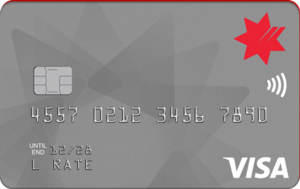





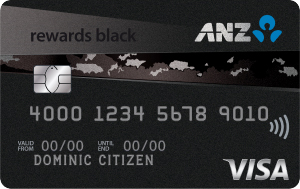
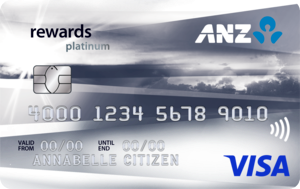
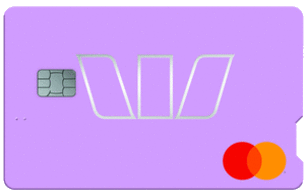
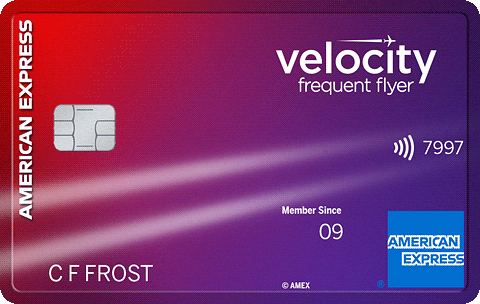
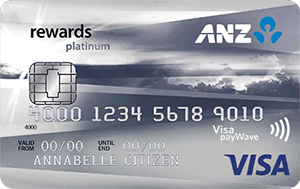
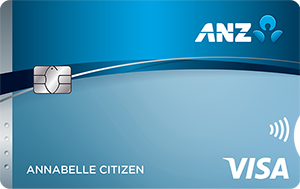
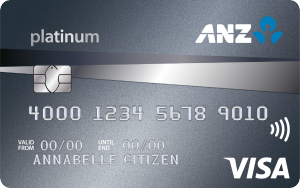
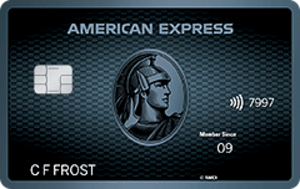
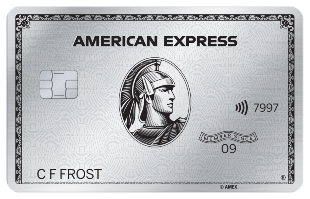








Christopher
18 August 2025Pauline
24 August 2025Saiyasi Ratuwaqa
12 June 2023Pauline
13 June 2023Kirsty
3 March 2022Pauline
3 March 2022Sumit Dey
13 October 2021Roland
14 October 2021Christine Ting
4 June 2021Roland
7 June 2021Dmitry Klymenko
3 June 2021Roland
3 June 2021Justin
2 August 2020Roland
3 August 2020